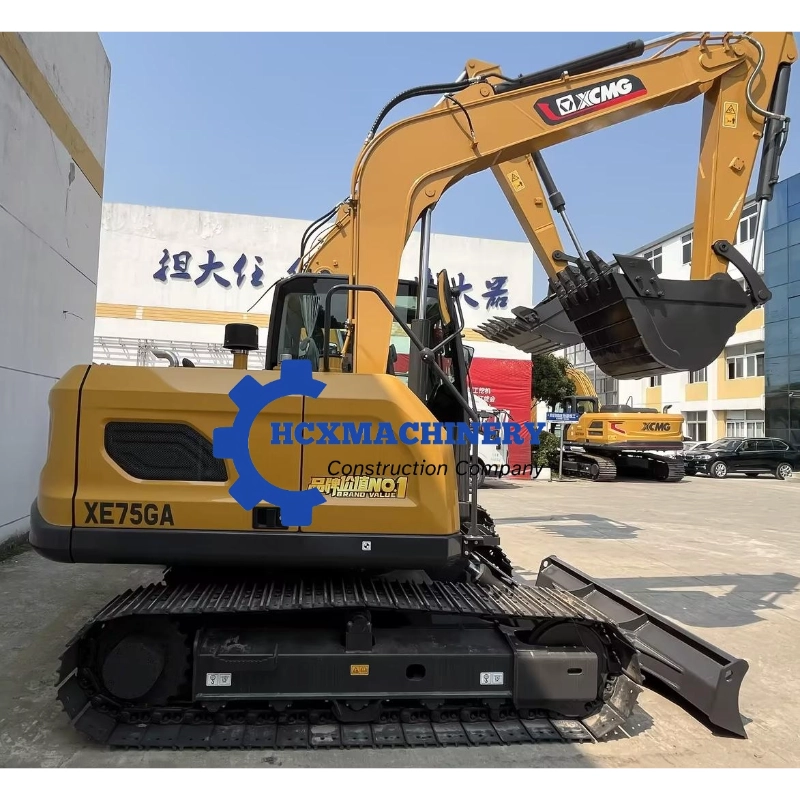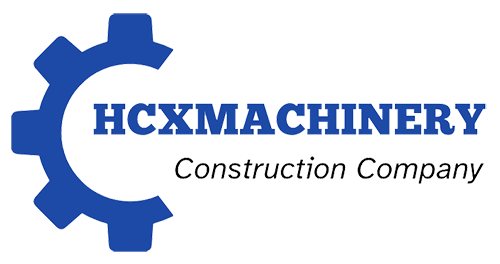The decision to purchase heavy machinery is a significant capital investment that can define the success of your construction, mining, or land development projects. For many businesses and entrepreneurs, especially those entering new markets or operating with constrained budgets, buying a high-quality used excavator presents the most strategic and financially astute path forward. The global market for used heavy equipment is vast and can be complex, filled with both incredible opportunities and potential pitfalls.
This ultimate guide is designed to demystify the process. We will provide you with the essential knowledge, critical questions, and industry insights needed to make an informed and confident purchase. Furthermore, we will introduce you to the principles that define our company—principles of quality, transparency, and unwavering support—that make us the ideal partner for your first export purchase.

Chapter 1: Why Choose a Used Excavator? The Compelling Advantages
The allure of a brand-new machine is understandable, but the economic and practical advantages of a certified used excavator are often far more impactful for your bottom line and operational flexibility.
- Substantial Capital Cost Reduction: This is the most immediate and obvious benefit. A used excavator typically costs 30% to 50% less than its new counterpart. This frees up crucial capital that can be allocated to other areas of your business: securing new contracts, hiring additional personnel, or investing in auxiliary equipment and attachments.
- Снижение амортизации: A new excavator experiences its most significant depreciation the moment it leaves the dealership. By purchasing used, you let the first owner absorb this steep initial value drop. The depreciation curve for a well-maintained used machine is far gentler, protecting your investment’s residual value.
- Immediate Availability: The lead time for a new, customized excavator can stretch for months. In the fast-paced world of construction, delays can mean missed deadlines and lost revenue. The global used market offers a vast inventory of machines that are inspected, serviced, and ready to be shipped to your project site without lengthy waits.
- Proven Performance and Reliability: A used machine has a history. With proper documentation and maintenance records, you can assess its real-world performance and durability. Common teething problems that might affect a new model have already been identified and resolved in a used model that has proven its mettle in the field.
- Easier Financing and Insurance: The lower purchase price often translates to more manageable financing terms and lower insurance premiums, further improving your project’s financial viability.
Chapter 2: Understanding the Excavator Universe: A Taxonomy of Types and Sizes
Selecting the right tool for the job is paramount. Excavators are not a one-size-fits-all solution. Understanding the different categories is your first step toward a successful purchase.
By Power Source:
- Standard Diesel Excavators: The industry workhorses. Renowned for their raw power, durability, and ease of refueling in remote locations. They are the default choice for most heavy-duty applications.
- Новый энергетический экскаватор: An emerging and critical category focused on sustainability and operational efficiency. This includes electric excavators (powered by grid electricity or large battery packs) and hybrid models. They offer drastically reduced emissions, lower noise levels for urban and indoor work, and significantly lower fuel costs over the machine’s lifespan. Ideal for environmentally sensitive projects, underground mining, and sites with strict noise ordinances.
By Under carriage Type:
- Standard Crawler Excavators: Featuring continuous tracks, these machines provide superior stability, traction, and weight distribution. They excel on soft, uneven, and muddy terrain where flotation is key. They are the preferred choice for the majority of excavation, trenching, and heavy-lifting tasks.
- Wheel Excavator: Equipped with rubber tires, these units offer unparalleled mobility and speed between job sites without requiring a low-loader trailer. They cause minimal damage to paved surfaces and are perfect for municipal work, road maintenance, utility projects, and applications requiring frequent relocation on hard surfaces.
By Size and Application Class:
- Микроэкскаватор (Under 1 ton): Miniature powerhouses designed for ultra-tight access spaces—backyards, interior demolition, landscaping, and small plumbing jobs. Their compact size belies their capability.
- Небольшой экскаватор (1 to 10 tons): The versatile all-rounders. Agile enough for residential construction and utility work yet powerful enough for digging foundations and light grading. A popular choice for small to mid-sized contracting firms.
- Средний экскаватор (10 to 45 tons): The backbone of the construction industry. This category handles the vast majority of general construction tasks, including deep excavation, heavy lifting, mass grading, and quarry work. They offer an ideal balance of power, reach, versatility, and transportability.
- Большой экскаватор (45 tons and above): Also known as mining or mass excavation shovels. These are colossal machines built for maximum productivity in large-scale mining, major civil engineering projects, and deep foundation work. They move immense volumes of material with every cycle.
- Экскаватор для специальных операций: This is not a size category but a functional one. It refers to standard excavators (often in the small to medium range) that have been purpose-built or extensively modified for unique tasks. Key examples include:
- Long-Reach Excavators: Featuring extended booms and arms for dredging, deep trenching, and demolition work at a distance.
- Demolition Excavators: Reinforced structures, protected hydraulics, and specialized attachments (like shears and hammers) for tearing down structures.
- Amphibious Excavators: Fitted with pontoon tracks for work in swamps, marshes, and shallow waterways.
- High-Rail Excavators: Modified to travel and operate on railway tracks for maintenance and construction.
Chapter 3: The Critical Pre-Purchase Inspection Checklist
Never buy a used excavator sight unseen. If you cannot personally inspect the machine, you must partner with a supplier who conducts a rigorous, multi-point inspection and provides full transparency. Here is what must be checked:
1. Service History and Documentation: Request the full logbook and maintenance records. A well-documented history is often more valuable than a machine with low hours but poor records. Look for consistency in oil changes, filter replacements, and major component servicing.
2. Structural Integrity:
- Undercarriage (for Crawlers): This is one of the most expensive components to repair. Measure the remaining life of the tracks, rollers, idlers, and sprockets. Check for cracks in the track frame.
- Main Frame (House) and Boom/Stick: Inspect for any cracks, welds, or patches, especially around stress points and pivot pins. These can indicate past overloading or accidents.
3. Hydraulic System:
- Check for Leaks: Inspect the entire system—cylinders, hoses, valves, and the main pump—for any signs of active or past leaks.
- Cylinder Condition: Check the chrome rods on the boom, arm, and bucket cylinders for scores, pitting, or rust, which can damage seals and lead to leaks.
- Performance: Operate all functions to ensure they are smooth and powerful, with no lagging, jerking, or unusual noises.
4. Engine and Powertrain:
- Start-Up: Listen for excessive smoke (blue smoke can indicate oil burning, black smoke signifies incomplete combustion) and unusual knocks or rattles.
- Fluid Analysis: If possible, perform an oil sample analysis. This can reveal hidden internal wear in the engine, hydraulics, and final drives long before a catastrophic failure.
- Final Drives: Operate the travel functions, listening for grinding or whining noises that could indicate failing gears or bearings.
5. Cabin and Electronics:
- Operator Station: Check all gauges, switches, and monitors for proper functionality. Ensure the seat, controls, and safety systems (like door locks) are in good working order.
- Electrical System: Test lights, sensors, and any advanced control systems.
Chapter 4: Beyond the Machine: The Art of Exporting Heavy Equipment
Purchasing the machine is only half the battle. Navigating international logistics, customs, and documentation requires expertise.
- Incoterms Clarification: Understand your shipping responsibilities. Are you dealing in FOB (Free On Board), CIF (Cost, Insurance, and Freight), or DDP (Delivered Duty Paid)? This defines who arranges and pays for shipping, insurance, and import duties. We guide our clients through this to ensure no surprises.
- Preparation for Shipping: The machine must be prepared to meet international standards for safety and environmental protection. This includes a full steam wash to meet biosecurity protocols (removing soil, seeds, etc.), draining fluids to a minimum level, and securing all moving parts.
- Documentation: The correct paperwork is non-negotiable. This includes the Bill of Lading, Commercial Invoice, Packing List, and a Certificate of Origin. Some countries require specific certificates of conformity. Our export department specializes in preparing a flawless document package to ensure your shipment clears customs without delay.
Chapter 5: Why Partner with Us? Your Strategic Advantage
In a market teeming with options, we differentiate ourselves through an unwavering commitment to quality, service, and partnership. We don’t just sell machines; we deliver solutions and peace of mind.
1. Our Curated Inventory Philosophy:
We do not simply aggregate listings. Our procurement team, staffed by seasoned engineers, actively sources machines from reputable first owners—often from large rental companies or well-maintained municipal fleets with impeccable service histories. Every Экскаватор, from a nimble Микроэкскаватор to a titanic Большой экскаватор, is pre-vetted before it even enters our yard.
2. The [Your Company Name] Certification Process:
Every machine we offer undergoes our proprietary, multi-stage certification process:
- Comprehensive Mechanical Inspection: As detailed in Chapter 3, performed by our certified technicians.
- Fluid and Filter Replacement: We perform a full service upon acquisition, regardless of the stated history, ensuring a clean start.
- Critical Component Assessment: We provide a detailed report on undercarriage wear (% remaining), brake condition, and hydraulic health with complete transparency.
- Operational Test: The machine is put through its paces to verify all systems perform to manufacturer specifications.
- Cosmetic Refurbishment: The cabin is detailed, the exterior is cleaned and painted if necessary, presenting you with a machine you can be proud to deploy.
3. Expertise Across the Entire Spectrum:
Whether your project requires a standard Средний экскаватор, a nimble Колесный экскаватор for city work, a innovative Новый энергетический экскаватор for a green project, or a robust Экскаватор для специальных операций for a unique challenge, we have the knowledge and network to source the perfect equipment. We help you match the machine to your specific application, preventing costly mismatches.
4. Seamless End-to-End Export Solution:
We are your single point of contact for the entire transaction. Our in-house logistics team handles everything:
- Professional Photo & Video Shoot: We provide high-resolution media so you can inspect the machine virtually.
- Shipping & Freight Management: We arrange optimal routing and secure booking with trusted carriers.
- Customs Documentation: We prepare and verify all export and import paperwork.
- Insurance: We facilitate comprehensive marine insurance coverage for the voyage.
- Post-Sale Support: Our relationship doesn’t end at the port. We provide ongoing support for sourcing parts and technical advice.
Conclusion: Building Your Future, One Machine at a Time
Venturing into the international market for a used excavator is a decisive step toward growing your business and enhancing your operational capabilities. While the process requires diligence, the rewards—acquiring a powerful, reliable machine at a fraction of the cost of a new one—are immense.
By choosing to partner with a supplier who prioritizes integrity, transparency, and comprehensive service, you transform a complex transaction into a straightforward and secure investment. You gain more than a piece of equipment; you gain a strategic partner dedicated to your success.
Let us help you navigate this journey. Contact our team of experts today to discuss your project requirements and discover how our certified, high-quality used excavators can become the foundation of your next great achievement.

